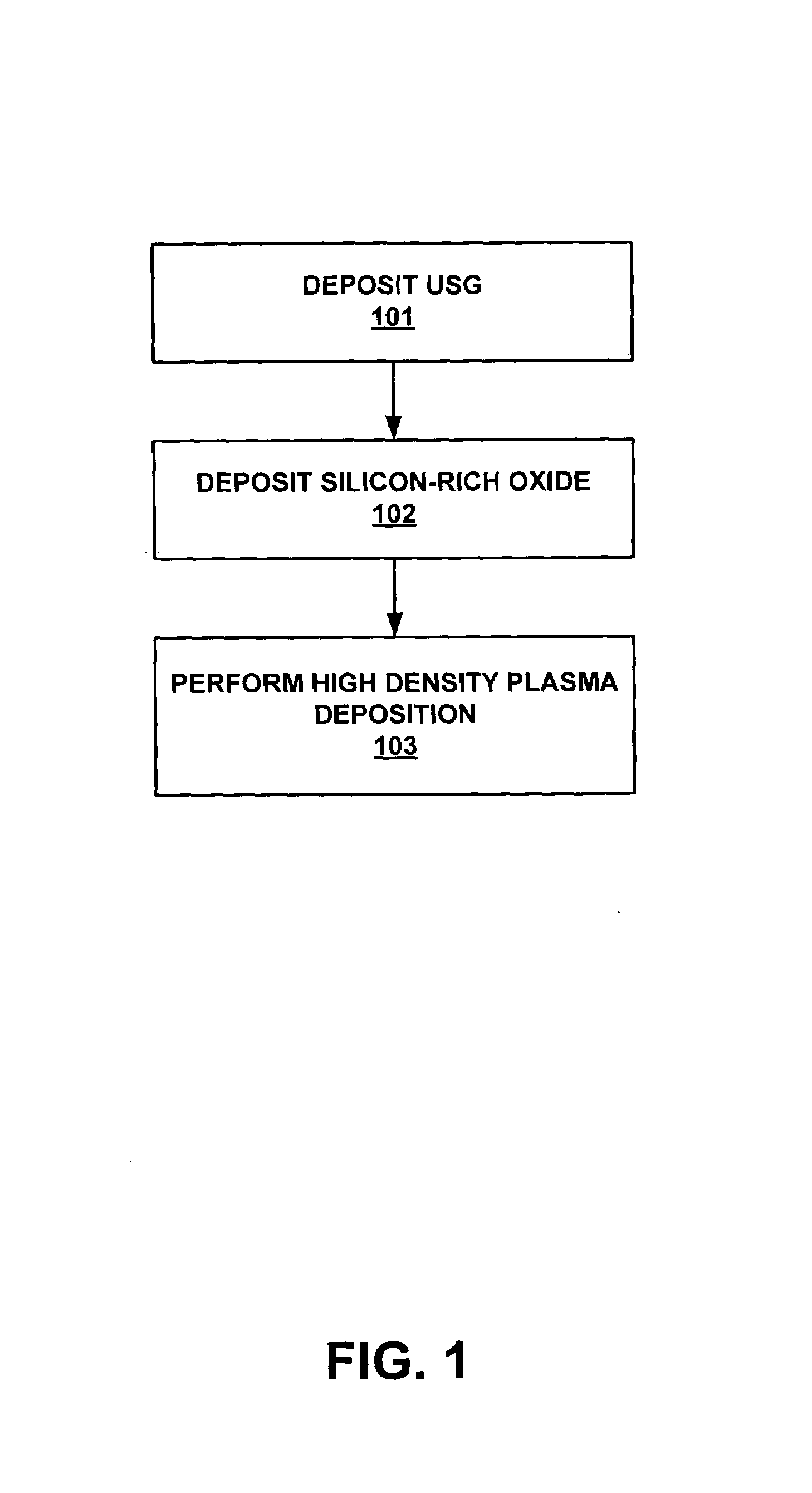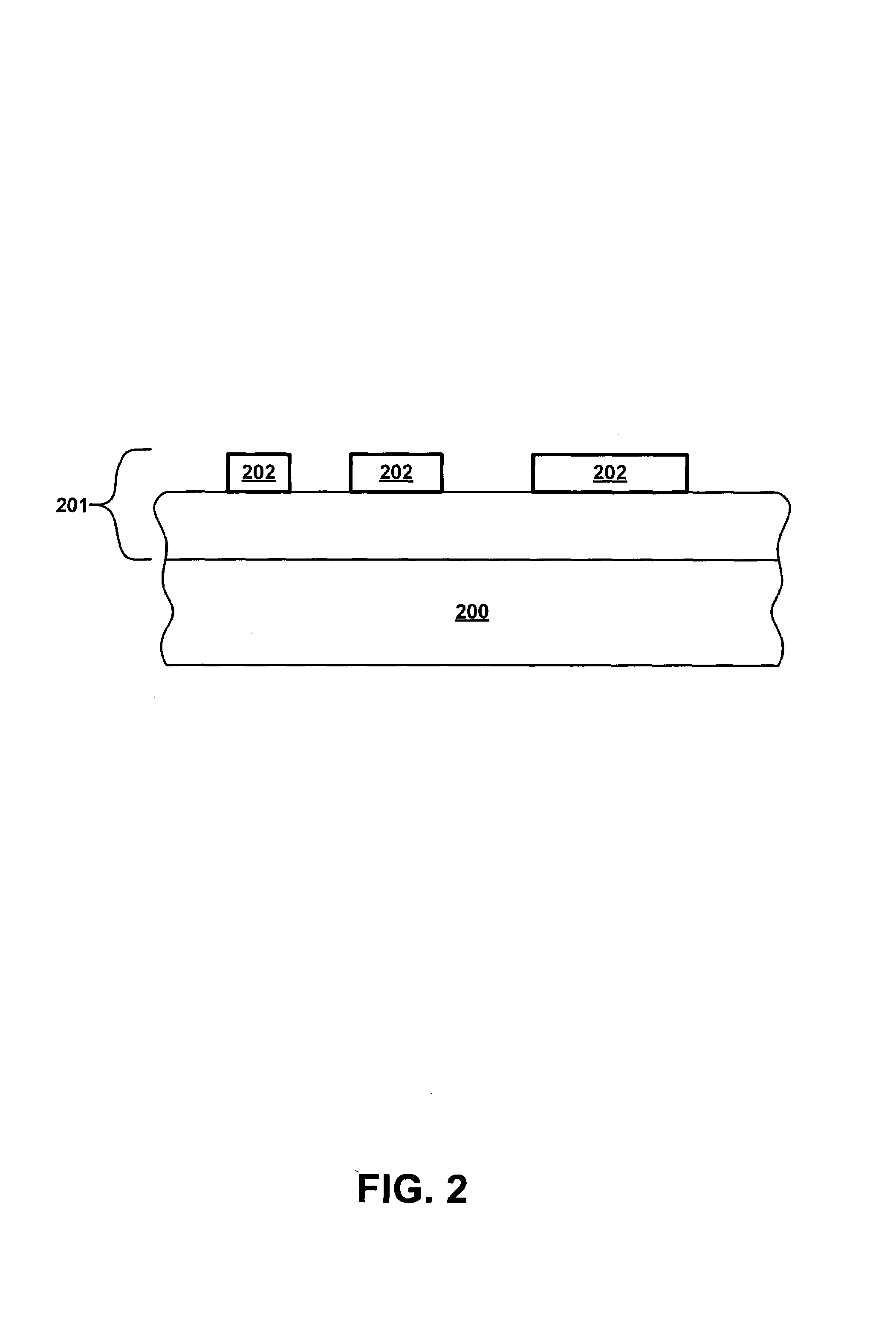Preventing plasma induced damage resulting from high density plasma deposition
a plasma deposition and high density technology, applied in the field of plasma induced damage, can solve problems such as device failure, thin gate oxide layer damage, device failure, etc., and achieve the effects of preventing device failure, preventing plasma induced damage, and preventing device failur
- Summary
- Abstract
- Description
- Claims
- Application Information
AI Technical Summary
Benefits of technology
Problems solved by technology
Method used
Image
Examples
Embodiment Construction
[0024]In the following detailed description of the present invention, numerous specific details are set forth in order to provide a thorough understanding of the present invention. However, it will be recognized by one skilled in the art that the present invention may be practiced without these specific details or with equivalents thereof. In other instances, well known methods, procedures, components, and circuits have not been described in detail as not to unnecessarily obscure aspects of the present invention.
[0025]FIG. 1 shows a method for preventing plasma induced damage resulting from high density plasma deposition processes in accordance with one embodiment of the present invention. First, as shown by step 101, Un-doped Silica Glass(USG) is deposited. In the present embodiment, USG is deposited in-situ so as to form a USG liner.
[0026]Continuing with step 101, in the present embodiment, USG is deposited so as to form a USG liner having a thickness of from 50 to 200 Angstroms. ...
PUM
 Login to View More
Login to View More Abstract
Description
Claims
Application Information
 Login to View More
Login to View More - R&D
- Intellectual Property
- Life Sciences
- Materials
- Tech Scout
- Unparalleled Data Quality
- Higher Quality Content
- 60% Fewer Hallucinations
Browse by: Latest US Patents, China's latest patents, Technical Efficacy Thesaurus, Application Domain, Technology Topic, Popular Technical Reports.
© 2025 PatSnap. All rights reserved.Legal|Privacy policy|Modern Slavery Act Transparency Statement|Sitemap|About US| Contact US: help@patsnap.com



